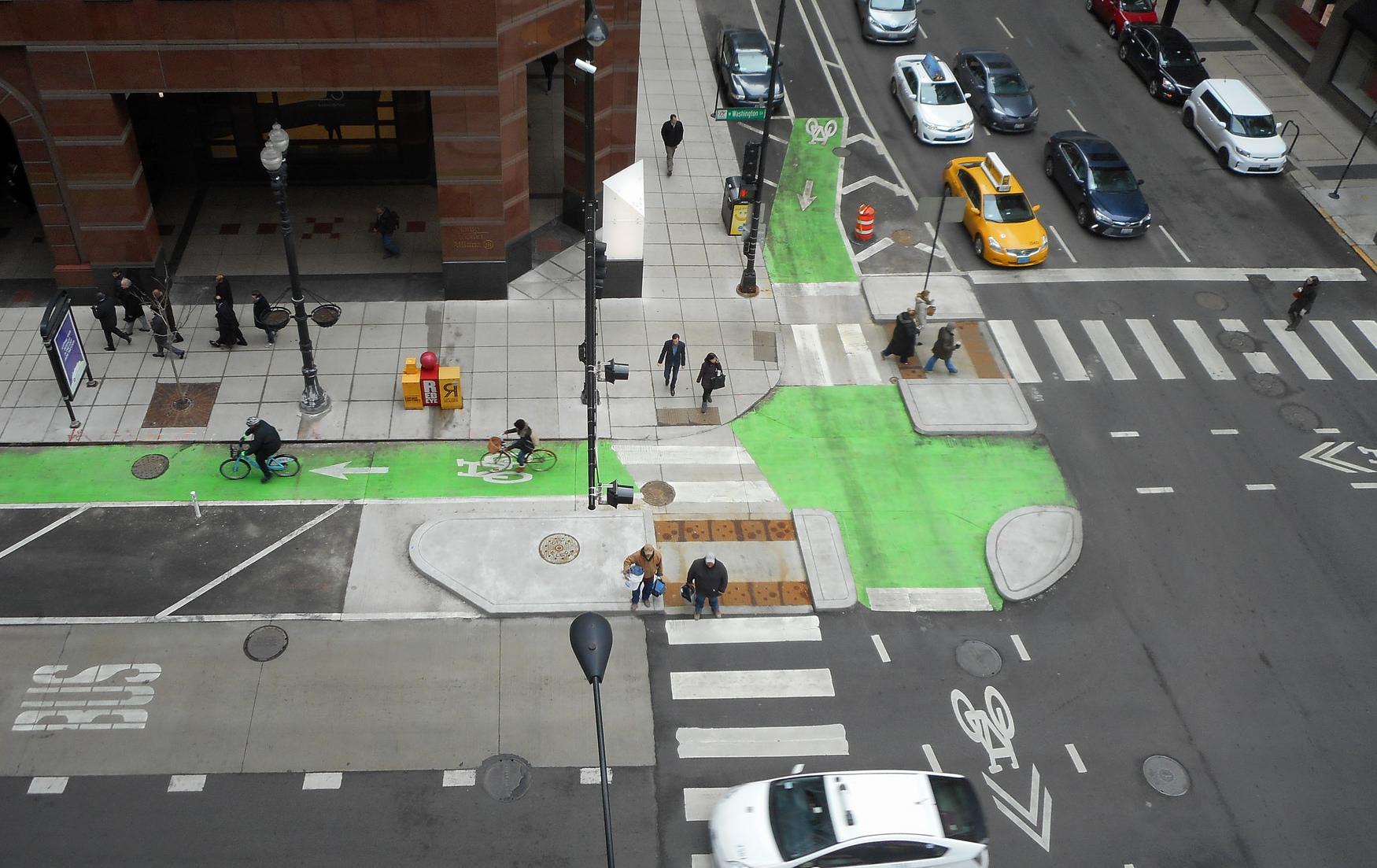The National Association of City Transportation Officials, representing more than 50 urban transportation departments across the United States, is known for street design guides that prioritize walking, bicycling, and transit. Now the organization is turning its attention to the nuts-and-bolts of how city bureaucracies can implement these designs in a timely manner, so meaningful change can happen within our lifetimes.
“NACTO, for years now, has been codifying best practices in street design," said Corinne Kisner, NACTO's director of policy and special projects. “Now, it’s really critical to help cities understand not just what to do, but how to do it -- and how to do it better and faster."
Many cities have launched pilot programs to experiment with changes like on-street plazas, protected bike lanes, and busways. But few are able to crank out smarter street designs at a consistent pace.
“There’s lots of exciting stuff being built around the country, but it seems like a relatively small number of cities have figured out how to go from a bike lane to a full bike network, for example," said Kate Fillin-Yeh, NACTO's director of strategy. “We’re trying to get a sense of what those cities are doing -- are there commonalities? Are there lessons we can learn from them?”
To answer these questions, NACTO is launching an initiative called Green Light for Great Streets to identify what's holding back implementation in cities around the country, and strategies for overcoming those barriers. The effort is partially funded by Greenfield Labs, a research and innovation team within Ford Motor Company's smart mobility division.
Because every city and state has its own institutional and political landscape, the answers will likely change depending on the place. “It’s really a city-specific question depending on a whole host of things," said Fillin-Yeh. "Are you a city with a strong mayor or a weak mayor? It's probably likely that there are a series of best practices that work well in, for example, weak-mayor cities. And those might not work in strong-mayor cities."
Some cities are already revamping the way they deliver transportation projects. In the past few months, Oakland established a new transportation department headed by New York City's former chief transportation planner Ryan Russo; Nashville Mayor Megan Barry said she would create a new transportation division within her city's public works department; and Pittsburgh hired former D.C. transportation exec Karina Ricks to head its new mobility and infrastructure department.
The position in Pittsburgh was created after Mayor Bill Peduto asked NACTO to diagnose flaws in the city's project delivery process, reports The Incline:
NACTO then connected the administration to Sam Salkin, a Harvard Kennedy School graduate student... [who] found a lack of communication between agencies and stakeholders, which led to missed opportunities. (For example, when DPW repaves streets, the city’s bicycle and pedestrian planner usually doesn’t get the plans early enough to propose new bike lane infrastructure that could be installed concurrently.)
Earlier this year, Salkin met with the mayor and recommended the creation of a transportation director position, which Peduto embraced.
NACTO is also working with Denver to help straighten out its transportation bureaucracy.
“Cities are asking about the handoff between projects along the way and whether their nuts-and-bolts processes are set up to deliver these new types of projects," Kisner says. "That’s really where things fall through the cracks -- when you hand off between design and implementation and outreach, at different steps along the way."
In some cases, city agencies may need to change their procurement practices, not just their internal structures, to improve the implementation process. Cities often contract with construction companies on a project-by-project basis, which Fillin-Yeh says can add time to each project. Transitioning to on-call contracts for striping and small-scale concrete work can allow cities to be more flexible with their resources, she said. And setting public implementation schedules and benchmarks can help keep cities accountable.
“A lot of cities, they’re not used to doing this type of stuff yet," says Fillin-Yeh. She's looking forward to identifying the obstacles transportation agencies face that hold back better street designs. “There is so much potential in cities to do so much, and figuring out how to unlock that stuff is going to be huge."





